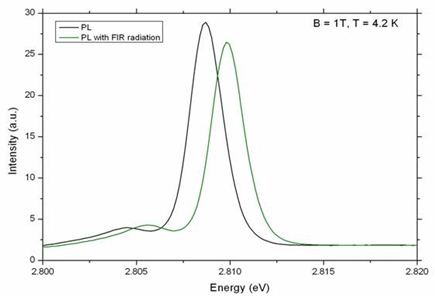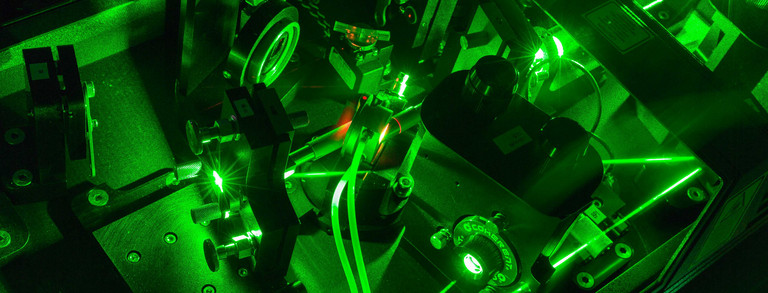Optically Detected Resonances
Introduction
We use optically detected resonance techniques, including optically detected magnetic resonance (ODMR) technique and optically detected cyclotron resonance (ODCR) technique, to study II-VI and III-IV semiconductor nanostructures, such as CdTe/Cd0.65Mg0.35Te quantum wells and GaAs/AlxGa1-xAs quantum wells. The principle of these two techniqes are quite similar. Transisitnos between spin sub-level or Landaul levels can be induced by microwave or far-infrared (FIR) laser. These transistions can directly or indirectly influece the photoluminenscence (PL) of the semiconductor nanostructures under study. By analysing the PL with and without the microwave or FIR laser ,many papermeters, such as effective masses of carriers, the mobility of the sample, g-factors, Zeeman-Splitting can be determined.
Experimental setup
Setup 1
Fig. 1 shows the schematic of the ODMR setup. The sample is mounted in a 10 T optical cryostat and excitd by circularly polarized light. Polarization-resolved photoluminescence is dispersed in a spectrometer and recorded by a nitrogen-cooled CCD. The microwave is applied on the sample periodically. When the enegy of the micowave is equal to Zeeman splitting of electrons under certain magetic field, spin sub-level transistion can be induced, which results in the change of the PL. With this technique, the Zeeman splitting and electron g-factor can be determined.

Setup 2
We investigate transitions of semiconductor nanostructures which often lie in the energy range of a few meV. This corresponds to radiation in the far infrared regime with frequencies of a few THz. The detectors for far infrared light are not sensitive enough to allow direct absorption measurements. Therefore an indirect technique, the so called Optically Detected Resonance (ODR) technique is used to study the samples. Fig. 2 shows the experimental setup.

The recombination of carriers in a semiconductor structure generates the photoluminescence (PL) which depends on the properties of the sample (band gap, carrier concentration, temperature, magnetic field…). Changes to these properties are also reflected in the photoluminescence signal. Observing the PL with and without FIR radiation, at different temperatures and magnetic fields reveals details of the internal structure and other sample properties. It is possible to determine the effective masses of carriers, the mobility of the sample, g-factors, Zeeman-Splitting and to study charged excitons (trions).

Current Offers For Bachelor-, Master- or PhD-Theses
We offer Bachelor- and Master-theses in relation to the ongoing research. Feel free to ask someone of the team for more information.
Contact
- Prof. (apl.) Dr. Dmitri Yakovlev
Collaborations
- High Field Magnet Laboratory, Radboud University Nijmegen, Netherlands



